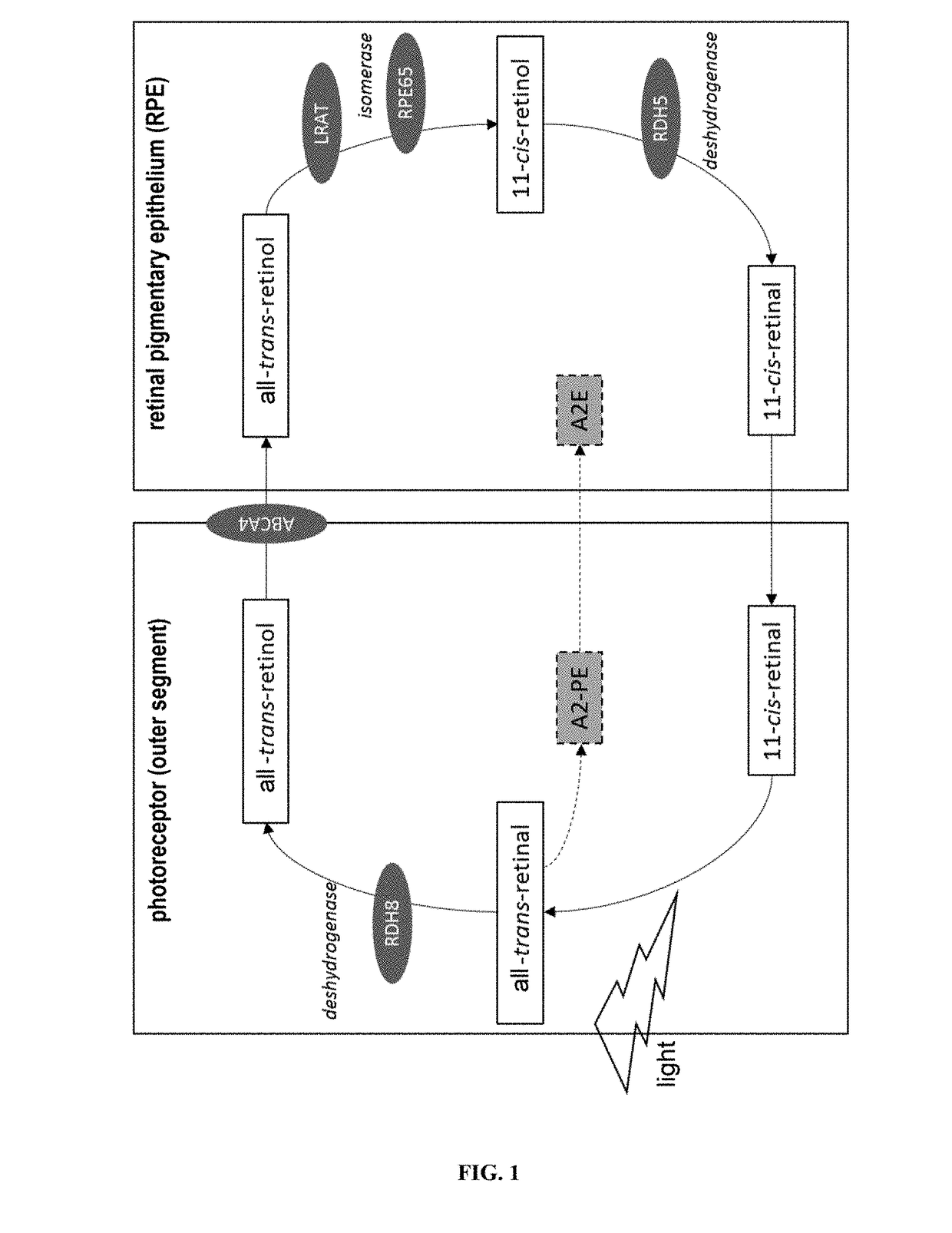Use of 3-deoxyanthocyanidins for treating occular diseases
- Summary
- Abstract
- Description
- Claims
- Application Information
AI Technical Summary
Benefits of technology
Problems solved by technology
Method used
Image
Examples
example 1
of the Compounds of the Invention
[0151]Compound 1. The 2,4-dihydroxybenzaldehyde (69 mg) and the 2′-hydroxy-4′-methoxy-acetophenone (83 mg-1 equivalent) are brought into solution in 500 μL of ethanol. 40 μL of thionyl chloride are added directly into the reaction medium which quickly becomes highly coloured. After one hour of stirring, the reaction medium is evaporated and the residue is precipitated in ethyl acetate, filtered and dried in order to yield the final compound (77 mg-yield 50%).
[0152]Compound 2. The 2,4-dihydroxybenzaldehyde (276 mg) and the 2′,3′-dihydroxy-4′-methoxy-acetophenone (364 mg-1 equivalent) are brought into solution in 2 mL of ethanol and 2 mL of ethyl acetate. 500 μL of thionyl chloride are added directly into the reaction medium which quickly becomes highly coloured. After one hour of stirring, the reaction medium is evaporated and the residue is precipitated in ethyl acetate, filtered and dried. The solid is brought into solution in a minimum of methanol ...
example 2
Assay of the Photoprotective Activity
Method
[0157]A cell model of phototoxicity induced by the association of a treatment by the A2E and of an illumination by blue light on primary cultures of RPE, wherein cell survival was measured, was used. This model uses primary cultures of retinal pigment epithelium of adult pigs.
[0158]This model makes it possible in particular to carry out the screening of molecules aimed at the discovery of new candidates for a treatment of the dry form of AMD. This model is closer to the “physiological” situation than the cell lines commonly used in literature, because the cells used contain protective substances provided by the diet of the animal and are therefore not in a situation of “deficiency”, and their disturbance is caused by the adding of A2E into the culture medium.
[0159]The cell cultivated in 96-well plates were treated for 48 hours with the compounds to be tested (in a 5 mM solution in the DMSO) in such a way as to obtain final concentrations of...
example 3
ssay of the Photoprotective Activity in Mice
[0169]A genetically modified mouse model developed by Maeda et al. (Invest Ophthalmol. Vis. Sci., 2009, 50, 4917-4925) was used to test the photoprotective activity of the compounds of the invention.
[0170]In this mouse model, two genes involved in the visual pigment cycle (ABCA4 and Rdh8, see FIG. 1) are inactivated, which results in an early accumulation of A2E in the eyes. This animal model is therefore representative of the human pathology.
[0171]Mice aged 7 weeks were used to carry out the unilateral intravitreal injections of solubilised diosmetinidin (50 μM) in DMSO and diluted in PBS (1.2:100), in order to obtain a concentration in the vitreous of 100-130 μM. DMSO diluted in the PBS was injected into the control animals. After 24 h in the dark, the mice were subjected to an exposure to blue light (4000 lux, 1 h).
[0172]The electroretinograms carried out 7 days later showed a protective effect of the diosmetinidin, of which the presenc...
PUM
 Login to View More
Login to View More Abstract
Description
Claims
Application Information
 Login to View More
Login to View More - R&D
- Intellectual Property
- Life Sciences
- Materials
- Tech Scout
- Unparalleled Data Quality
- Higher Quality Content
- 60% Fewer Hallucinations
Browse by: Latest US Patents, China's latest patents, Technical Efficacy Thesaurus, Application Domain, Technology Topic, Popular Technical Reports.
© 2025 PatSnap. All rights reserved.Legal|Privacy policy|Modern Slavery Act Transparency Statement|Sitemap|About US| Contact US: help@patsnap.com



